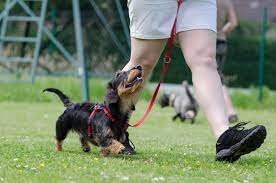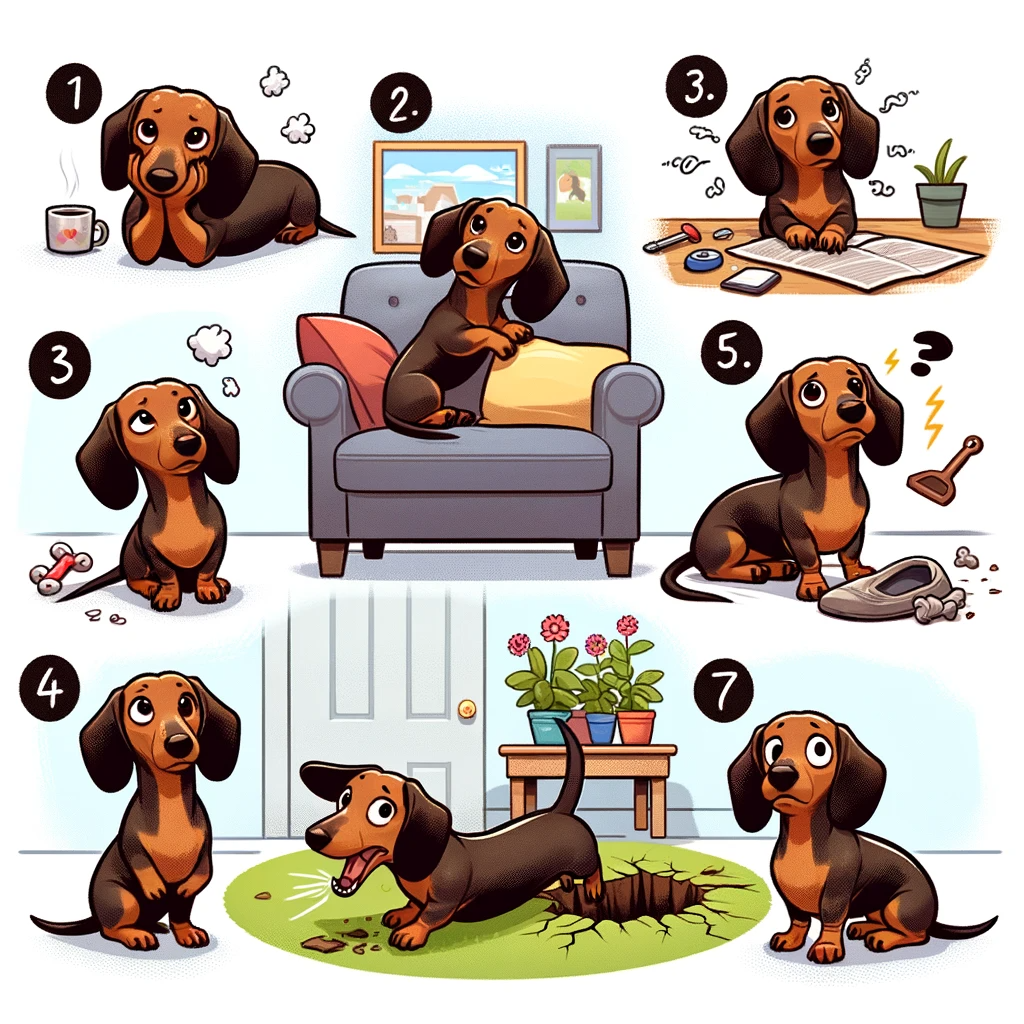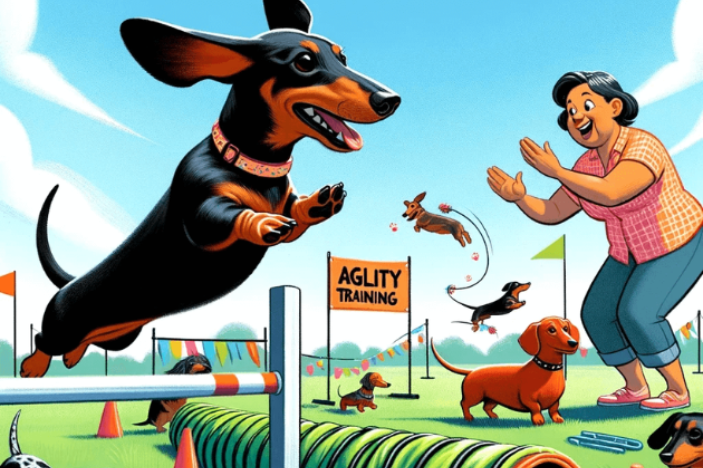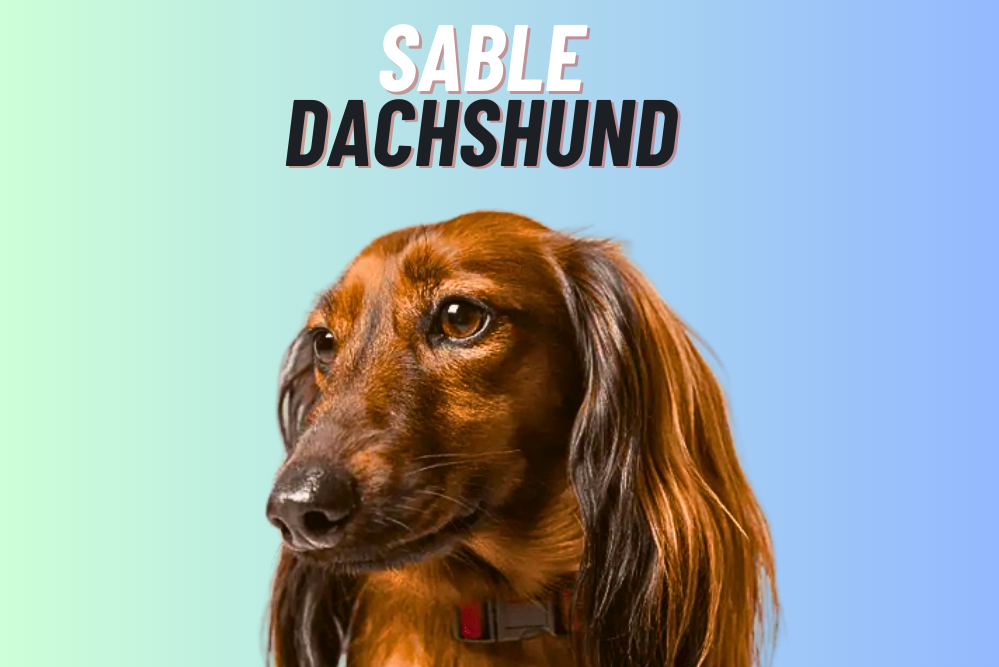The discipline methods that work best for one dachshund may not work at all for another. However, here are a few tips that may help you in disciplining your dachshund:
- Be consistent in your approach. Don’t give up on Discipline 101 – establish rules and guidelines from the beginning and stick to them even if they seem difficult at first. This will help your canine understand what is generally expected of them and they will be bound to comply.
- Reward acceptable behavior instead of reprimanding fearful behavior.
This will help your dachshund understand that behaving in a proper manner is always rewarding, no matter what the circumstances might be. You can use treats or other forms of reinforcement whenever your dog behaves properly, whether it’s during a training session or simply when they’re behaving around people or other animals outside of the home.
Set limits and enforce them firmly but calmly.
If your dog is breaking the rules, set some boundaries and expectations for their behavior. Be clear about what is not allowed and be prepared to take action if those boundaries are violated. Avoid raising your voice or getting angry – this will only complicate the situation for both you and your canine.
The most effective way to train a dachshund discipline is to observe the behavior and character of the individual canine. In any case, a few tips that may work include:
- Make sure your canine knows who’s in charge.
- Providing clear and concise commands
- Timing your punishment correctly so it doesn’t become too overwhelming or frustrating for your dog
- Being consistent with your punishments
Everything is based on my research and personal experience because I like dachshunds. You can apply some tough tips for dachshund discipline with your dog since it will work well.
each day, spend one to two hours with dachshunds. Recognize your dachshund’s personality before implementing each of these training.
stop:-
As each dog will respond differently to various preparation strategies. However, some tips that may be effective for teaching your dachshund barking discipline include:
- Start by establishing rules and boundaries in a calm, consistent manner. This includes drawing certain lines for howling and making it clear that the bad behavior will not be accepted to ensure your dachshund understands exactly what you are asking him or her to stop doing, and use positive reinforcement such as feedings or playtime when appropriate.
- Avoid physical punishment – this only serves to further confuse and aggravate dogs who have already bolted out of control often due to barking anxiety disorders. Instead, try distracting the dog with treats or toys when he or she begins exhibiting unwanted behaviors outside of designated times/spaces. Be sure also take notes of the specific incidents (date/time etc.) so you can more effectively address them in future encounters.
Potty training:-
If your dachshund is not yet potty trained, you will need to start out by training him outside. Once he is successfully going on the pad in a controlled setting outside, you can move on to training him indoors. This process involves putting his crate in a designated room and rewarding him with treats when he goes inside to use the bathroom.
There is no one-size-fits-all solution to this inquiry, as potty preparation depends on how diligent your dachshund is and what kind of guardian you are. However, some tips that may be helpful include praising him when he goes outside (even if he only pees in his designated spot), using treats or peanut butter to train him when it’s time to go, and establishing a regular routine. As a last resort, enlist the help of an expert.
Biting:-
One common misunderstanding about Dachshunds is that they are prone to biting when they’re anxious or afraid. However, this isn’t the case at all. In fact, most Dachshunds actually don’t want to bite anyone and may resort to it as a last resort if they feel threatened or cornered.
The best way to prevent your dog from biting is by teaching them basic obedience commands like sit, stay, down, and come when called. If your dog does start to act out aggressively, try using a Gentle Leader headcollar or shock collar instead of Holding them back with force. Additionally, make sure you get training on how safely handle firearms so that your canine companion doesn’t become aroused by gunfire and lash out in fear.
Leash Training:-
Since dachshunds were originally bred as hunting dogs, they are instinctual to chase smaller animals. This means that when your dachshund is on a leash during walks, it may struggle to control its impulses and could become frightened or defensive.
Instead of using a leash, try training your dog with positive reinforcement techniques such as giving rewards for good behavior (such as treats) instead of pulling/jerking on the leash. You can also use an electronic collar that gently shocks your dog if he strays too far from you while walking.
Ultimately, it’s important to acclimate your dog gradually to being on a loose-leash walk by starting with shorter distances and then increasing them over time until both you and the dog are comfortable leaving home without needing the leash.
Crate Training:-
As a dachshund owner, you undoubtedly know how important crate training is for your furry friend. This training helps to prevent destructive behaviors in the home and allows for calm and restful times when guests are around.
The best way to teach crate training is gradually and steadily over time. Start by placing your dog inside their Crate whenever they’re not allowed out of it, and then gradually increase the time that they’re locked up until they’re able to spend extended periods in there without any fussing or protests. Additionally, make sure to provide them with plenty of toys while they’re spending time inside their crate so that they don’t get bored or restless. Positive reinforcement such as treats or access to fresh water should be offered frequently throughout the day if things go smoothly. Remember: consistency is key!
Include Rewarding into Training:-
One of the best ways to include rewards in training when working with a dachshund is to use clicker training. This type of reinforcement-based training is simple to implement and can be used in a variety of situations, including during walks, playing time, or any other activity you have planned for your dog.
When using clicker training, first make sure that you have a supply of clickers (these are small animals made from plastic that emit clicking sounds when clicked) and bingo cards (or some other method for recording what behaviors earn clicks). Then set up a simple schedule in which your pet will know what behavior gets rewarded. For example: after walking on the leash for 3 minutes without pulling; eating two treats placed on the floor near their food dish; sitting at the table while being verbalized “sit;” etc.
Every few hours throughout the day (and once daily at bedtime), offer your pup an opportunity to perform one or more desired behaviors by presenting them with a Clicker as they complete it successfully. As soon as they receive the reward–usually something like kibble or play–they’ll associate this good feeling with future actions leading smoothly towards further rewards down the road!
How do you deal with disobedient dachshunds?
As a dachshund parent, one of the most important things you can do is develop a positive relationship with your dog. This will help to avoid disobedient behavior in the future. When your dachshund is behaving inappropriately or not following simple commands, it’s important to first address any possible rewards or punishments that may have been reinforced at an early age.
If corrections are unsuccessful, then it may be necessary to take your dog for professional obedience training. A certified trainer will be able to guide you on how to best train and teach your little guy. Additionally, they can offer tips on how to create positive associations between certain behaviors and desired outcomes.
Are dachshunds difficult dogs?
While many people think of dachshunds as quirky and difficult dogs, this is not always the case. Here these tiny canines are one of the most versatile breeds. They make great family pets because they are loyal and loving companions who enjoy being around people. Dachshunds also have a reputation for being droolers (although this can be remedied with proper training), so care should be taken when selecting your dog’s home if you’re concerned about cleanliness or pet stains.
In terms of behavior, dachshunds typically tend to be obedient and easy-going but can sometimes be stubborn when it comes to rules that they don’t understand. With proper socialization from a young age, however, these quirks usually disappear over time!
Why is it so hard to train Dachshunds?
Dachshunds are a hard breed to train because of their high energy level and stubbornness. This is compounded by their short digestive system, which means that they do not digest food well. They also have a low threshold for pain, meaning that any type of correction or punishment will be immediately responded to with aggression.
Because Dachshunds are so challenging to train, it is most important to train them from an early age in order to prevent behavioral issues down the road. The best way to begin training your dog is through positive reinforcement techniques such as bribery (i.e., giving your dog tidbits
when they obey), rewards (which can include toys, treats, and playtime), and consistency (providing the same ruleset throughout the training process). Once you have successfully trained your dog using positive reinforcement methods and keeping him consistent with his ruleset over time, it will be coming harder for him to control his impulses and behavior appropriately around people and other animals.
Why do dachshunds bite?
Dachshunds are a very enthusiastic breed of dog that loves to play and can be quite persistent in their puppy-like behavior. This strong urge to play can sometimes manifest itself in biting, especially when they’re excited or aroused. As with all dogs, dachshunds need socialization from an early age so that these aggressive tendencies don’t become habituated.
If you know your dachshund is prone to biting, the best way to prevent it is by training him using positive reinforcement methods such as food rewards or games of catch. You should also try teaching him some basic obedience commands like sit and stay before attempting any kind of physical interaction. In addition, setting boundaries during periods of high excitement (such as during fireworks displays) will help reduce the chances of bite incidents altogether.
which is the most disobedient dog breed?
Some of the most disobedient dog breeds include Boxers, Westies, Shetlands, and Dobermans. These canines are known for being hyperactive and frequently experience difficulty controlling their way of behaving. They also tend to be more aggressive than other breeds and may not respond well when obedience training is introduced early on in life. As a result, these dogs are typically recommended for people who do not have time or patience to teach them basic commands.
Instead of choosing one of these tough-guy breeds as your new pet, think about what kind of personality you’re looking for in a canine companion and select a breed that matches your needs. For example, if you’re looking for an outgoing dog that loves going out activities with you regularly, then consider adopting a Golden Retriever or Labrador Retriever instead. On the other hand, if you want something less active that will stay at home mostly alone but is still able to protect your property while hunting intruders or fulfilling its guarding duties around the house; choose German Shorthaired Pointer or Welsh Corgi as perfect candidates!
How much attention do dachshunds need?
As a shorter-haired dog, dachshunds typically require less attention than some of the other larger dog breeds. That said, they still need daily exercise and playtime to stay healthy and excited A morning walk or jog is usually sufficient for them, but if their daily routine gets too repetitive or boring, they may start to get restless and destructive.
If your dachshund seems excessively active or nippy when you’re not home, it might be helpful to add an hour of supervised playtime each day into their schedule. This will help transient interactive energy be expended constructively instead of being stored inside them in destructive ways.
How to Correct Bad Behaviour in a Positive Way
There are many ways to correct bad behavior positively, but the most effective approach may vary depending on the situation. For example, if your child is misbehaving at home, you might want to ignore them or give them a time-out. If they’re being disruptive in class, you can try reasoning with them or sending them to their desk without talking. If your partner isn’t meeting your expectations sexually, you could attempt communication diplomatically before considering other options such as breaking up.
Ultimately, it’s important to be aware of the different techniques that work well for different situations and use what works best for you and/or your loved ones.
Conclusion
Discipline is a process that takes time and patience. The first step in disciplining your dachshund is to identify the problem. If you know what’s wrong, then you can begin to address it by making changes in behavior or through training techniques. The subsequent stage is to decide whether other issues need tending to also.
For example, if your dog has been eating too much (or too little) food, then you may want to consider making changes in how much he eats each day so that he doesn’t overeat or lose weight.
If you have a problem with aggression towards other dogs or people, then you may want to consider using deterrents such as treats and/or toys instead of physical punishment.
Finally, if your dog seems stressed out about something – whether it’s an illness or injury – then he needs to be evaluated by his veterinarian before continuing on the treatment plan.
In addition, if your dog seems anxious about something – whether it’s going into heat season or an upcoming event – then make sure that he feels comfortable enough with his surroundings so that he can relax and enjoy himself while doing so.
You can also use positive reinforcement methods such as praise and rewards when appropriate – but remember that these will only work if they’re being used consistently over time rather than being applied just once every day







